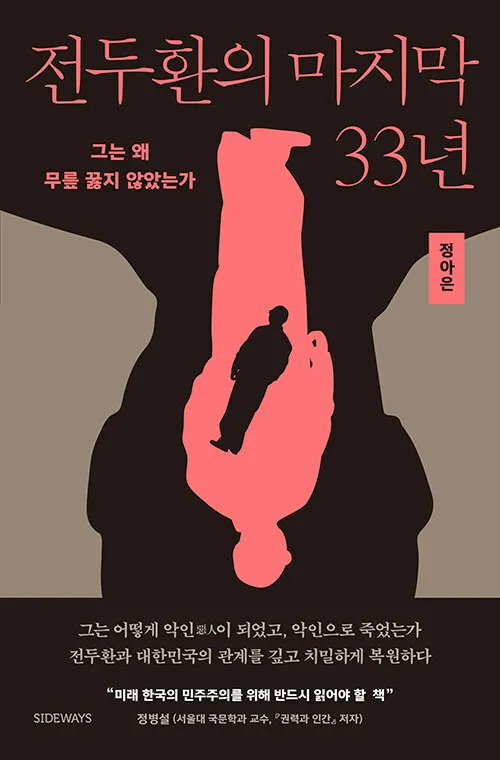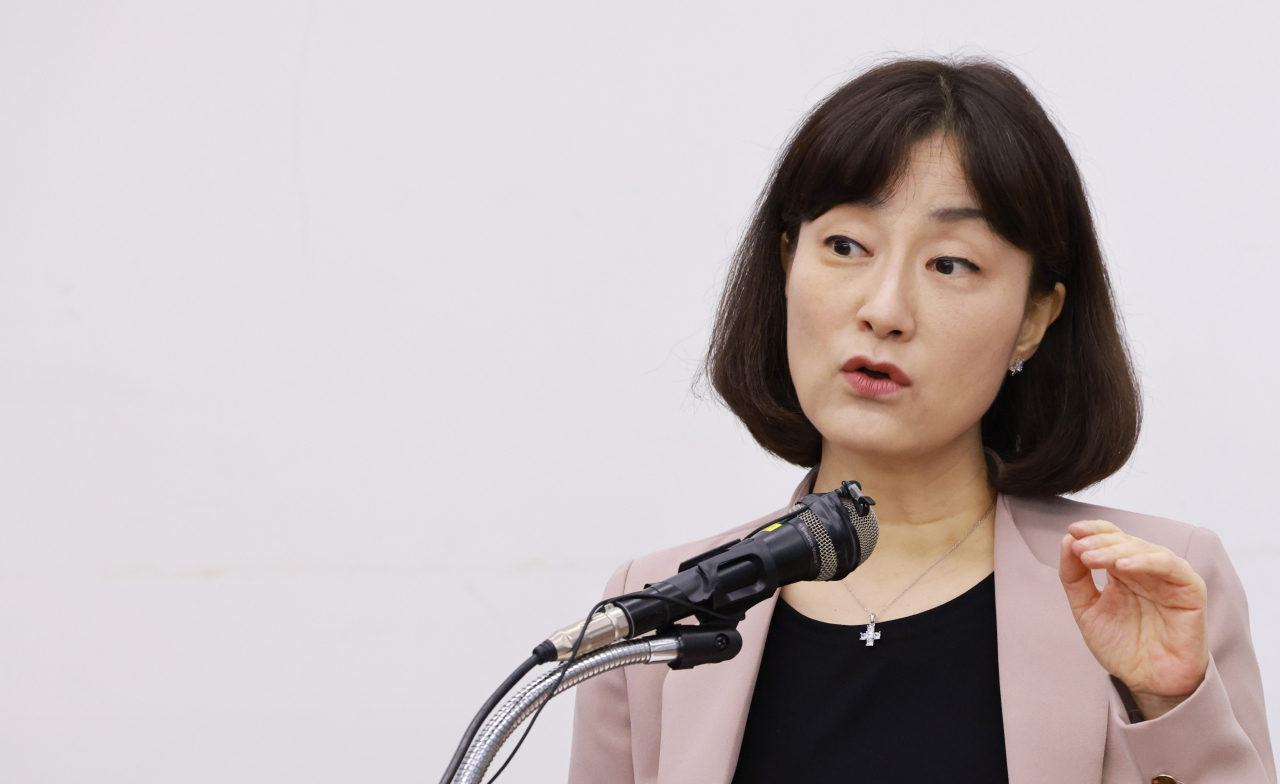
Chun Doo-hwan died on Nov. 23, 2021.
“Rather than grieving over the loss of a former leader, there was a shared sense of regret among the people -- a regret for the missed opportunity to bring him the justice he deserved,” novelist Jeong A-eun said at a recent press conference.
“Then it dawned on me. This man didn’t pass one or two years after leaving the highest office. He lived a long 33 years. Why didn’t they do something during all those years?”

Her endeavors to find answers to that question is encapsulated in new book "Last 33 Years of Chun Doo-hwan’s Life.”
A release from local publishing house Sideways, it is a product of five years of exhaustive research, extensive interviews and a full year of piecing everything together on 400 pages.
There is no shortage of publications on Chun, who ruled South Korea as military strongman from 1979 to 1988. But hardly any takes a comprehensive approach to unravel his persona, or to explore the underlying conditions that paved way for his ascent to the pinnacle of power, Jeong said in a press conference on May 16 in Seoul.
“I thought I should write it.”
Written in Korean, “Last 33 Years of Chun,” tracks the deceased dictator’s life from childhood to death at age 90, though not necessarily in chronological order. It seeks, and mostly succeeds in the effort, providing a richer, more textured and balanced look at the most vilified politician in South Korea.
Among the early highlights of the book is when the author argues that Chun shares the key traits of early Korean leaders Syngman Rhee and Park Chung-hee in that he embodied the social ethos at that time of "making the impossible possible."
As leaders, all three strove to deliver miracles to a country devastated by colonization, division and a war, and it didn't really matter how they did it. Most of the Korean public, to an extent, turned a blind eye to the dark side of these leaders as long as they became better-off through modernization.
As the book chronicles, Chun was born to a poor family and started school three to four years later than others. With innate enthusiasm, socializing skills and ambition, he soon excelled his peers. With a diploma from the Korea Military Academy, he embarked on a path to success as a military officer.
In 1979, seven months before the assassination of then ruler Park Chung-hee on Oct. 26, the 49-year-old Chun was appointed as the head of the military intelligence unit. And before the arrival of the new year, he seized the power in a coup.
The book adds more depth to its narrative when discussing the 1980 massacre in Gwangju, in which nearly 5,000 were killed or injured as pro-democracy protesters clashed with the military sent by Chun. Through this incident, he cemented his grip on power.
The author, during the press conference last month, said at first she thought Chun may have been a psychopath, for displaying indifference to the massive consequences of his actions.
“But, to his family and close aides, he was a loving person who sometimes shed tears in show of empathy.”
“While deflecting blame for the Gwangju tragedy onto the 'rioters' or suggesting North Korea's involvement, he had the audacity to claim, ‘I deeply care about the citizens of Gwangju.’”
To explain, Jeong presents a theory of “a shallow mind.”
A person who has matured or with a normal depth of mind would occasionally confront their past mistakes and feel remorse. It is a painful process, and sometimes one navigates through it successfully, while other times not. But Chun "completely lacked the capacity to go through" this process because he had a shallow mind.
“Rather than delving deep within himself and confront his flawed self, Chun Doo-hwan would just stay on the surface level, only to retreat before incurring any lasting scars,” Jeong writes.
That explains his apparent lack of introspection to his death.
In 1996, Chun was sentenced to death on mutiny and treason charges stemming from his role in the 1979 coup, the 1980 Gwangju killings, and corruption. He was pardoned in 1997 by President Kim Young-sam upon the suggestion of President-elect Kim Dae-jung.
In 2003, while living as a free man, he claimed that he had just 290,000 won ($219) in assets, refusing to pay most of his fines. Yet, he was several times spotted visiting hotels and playing golf. He insisted that he was not responsible for the death of protesters in Gwangju, and had not apologized.
For this, the book says that South Korea, as a whole, has failed to properly condemn a person who committed a massacre. No system or societal mechanisms worked to serve justice in holding him accountable for his actions.
“The experience of putting up with and not punishing the evil has left a lasting scar on the Korean psyche,” it argues.
That is why understanding Chun leads to understanding of the Korean society, the book concludes, as it urges a collective self-reflection on the past, and reevaluation of the deceased controversial figure, not only to rectify the past wrong but to prevent future wrong.




![[From the Scene] Monks, Buddhists hail return of remains of Buddhas](http://res.heraldm.com/phpwas/restmb_idxmake.php?idx=645&simg=/content/image/2024/04/19/20240419050617_0.jpg&u=20240419175937)
